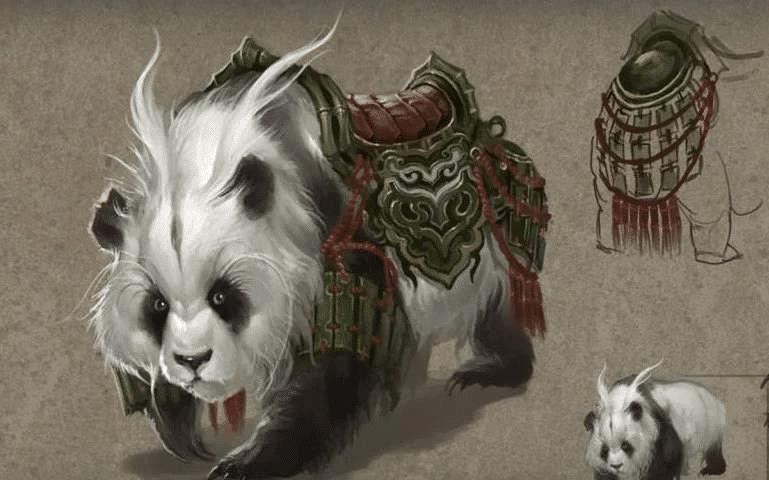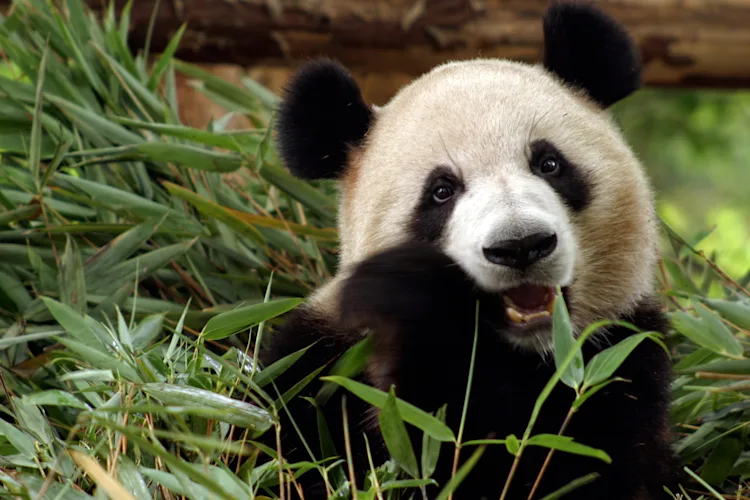The giant panda (Ailuropoda melanoleuca), China’s national treasure, is globally admired for its adorable appearance and bamboo diet. However, few people know that in ancient Chinese texts, pandas were once referred to as "Shi Tie Shou" (食铁兽), meaning the ‘Iron-Eating Beast’. This intriguing name, which dates back thousands of years, reflects both cultural folklore and early zoological observations. But why was the giant panda given such a fearsome title? Does it truly have an affinity for iron? This article explores the origins of the "Iron-Eating Beast", analyzing historical records, scientific explanations, and its modern cultural significance.

The earliest references to the giant panda and its supposed iron-eating behavior can be found in Chinese historical literature, particularly in texts spanning the Eastern Jin Dynasty (4th century CE) to the Qing Dynasty (17th-20th centuries CE). These records often describe the panda’s unusual dietary habits and strong jaws, leading to the creation of the legendary name "Shi Tie Shou".
Guo Pu’s Commentary on "Erya" (尔雅注, 4th Century CE): This is one of the earliest texts describing a panda-like creature, stating that it “resembles a bear, has a small head, black-and-white fur, and can lick and consume iron and bamboo bones.”
Tang Dynasty "Newly Compiled Materia Medica" (《新修本草》, 7th Century CE): The text describes an animal similar to the panda, known as “mo” (貘), which “eats copper and iron” and possesses great strength.
Ming Dynasty "Compendium of Materia Medica" (《本草纲目》, 16th Century CE): Renowned physician Li Shizhen documented an animal resembling the panda, noting that it could “lick and wear down metal objects such as copper and iron.”
Qing Dynasty "Xinqixie" (《新齐谐》, 18th Century CE): This book contains stories of pandas entering villages and licking iron pots and farm tools, reinforcing the idea that they could consume metal.
These accounts, while exaggerated, indicate that ancient observers noticed pandas engaging in metal-licking behavior, which over time evolved into the "Iron-Eating Beast" legend.
Beyond official texts, local historical records (gazetteers) from Sichuan and Shaanxi provinces frequently describe pandas as "iron eaters." Legends tell of pandas sneaking into villages at night to lick iron cookware, leaving visible marks on the metal. Some stories even portray pandas as mystical creatures with the ability to digest iron, strengthening their mythological reputation.
Despite these fascinating historical records, modern zoological research provides a scientific explanation for this seemingly bizarre behavior. While giant pandas do not consume iron, their strong bite force, unique dentition, and occasional licking of metal objects may have contributed to the legend.
One of the most striking features of the giant panda is its extraordinary bite force, which can easily crush tough bamboo stalks.
Studies show that a giant panda’s bite force can exceed 2603 Newtons (N), which is stronger than that of some carnivorous mammals.
Pandas have broad molars and an enlarged temporalis muscle, enabling them to exert immense pressure while chewing.
Their teeth are covered in highly durable enamel, allowing them to grind and crush extremely tough materials.
These traits, while evolutionarily adapted for a bamboo diet, might explain why pandas appear to "chew" or leave marks on metal objects, reinforcing their iron-eating reputation.
The licking of metal objects observed in some pandas can be attributed to a phenomenon known as pica, a behavior in which animals seek out non-food substances to compensate for mineral deficiencies.
In the wild, pandas occasionally lick rocks or soil to obtain essential minerals, such as iron, calcium, and magnesium, which may be lacking in their bamboo diet.
In captivity, some pandas have been observed licking metal bars or enclosures, possibly due to the scent or taste of oxidation (rust), mimicking their natural mineral-seeking behavior.
Pandas, like many mammals, explore their environment through scent and taste. Their curiosity might lead them to lick or gnaw on metal objects, which may have absorbed scents from food or the environment.
In captivity, pandas sometimes lick iron fences or tools, which might have traces of salt or other minerals, reinforcing the idea of their "iron-eating" tendencies.

Although the myth of pandas eating iron has been debunked scientifically, the cultural significance of the name "Shi Tie Shou" remains strong in China.
In ancient China, the panda was seen as a symbol of strength and resilience, and the name "Iron-Eating Beast" may have reflected its powerful nature.
Traditional Chinese paintings and literature often depict pandas as mystical, bear-like creatures with formidable strength.
The legend of pandas licking metal was sometimes used to signify good luck and protection, much like the Qilin or other mythical beasts.
Today, the giant panda is no longer feared as an iron-eating beast but is celebrated as a flagship species for global wildlife conservation.
Conservation programs have helped increase wild panda populations, with numbers rising from 1,114 in the 1980s to 1,864 today, thanks to efforts led by organizations such as WWF and China’s National Forestry and Grassland Administration.
The story of the "Iron-Eating Beast" is now used in educational programs to teach people about the importance of biodiversity and ecological balance.
The giant panda’s historical nickname, "Shi Tie Shou" (Iron-Eating Beast), is a fascinating blend of ancient folklore, early zoological observations, and modern scientific understanding. While pandas do not actually consume iron, their powerful bite force, mineral-seeking behavior, and environmental curiosity likely contributed to the legend.
Today, this once-feared creature has transformed from a mysterious beast into a cherished conservation icon, symbolizing the coexistence of humans and nature. The story of the "Iron-Eating Beast" serves as a reminder of how ancient myths can inspire scientific inquiry, bridging the gap between past legends and modern wildlife protection efforts.
animal tags: Ursidae
We created this article in conjunction with AI technology, then made sure it was fact-checked and edited by a Animals Top editor.